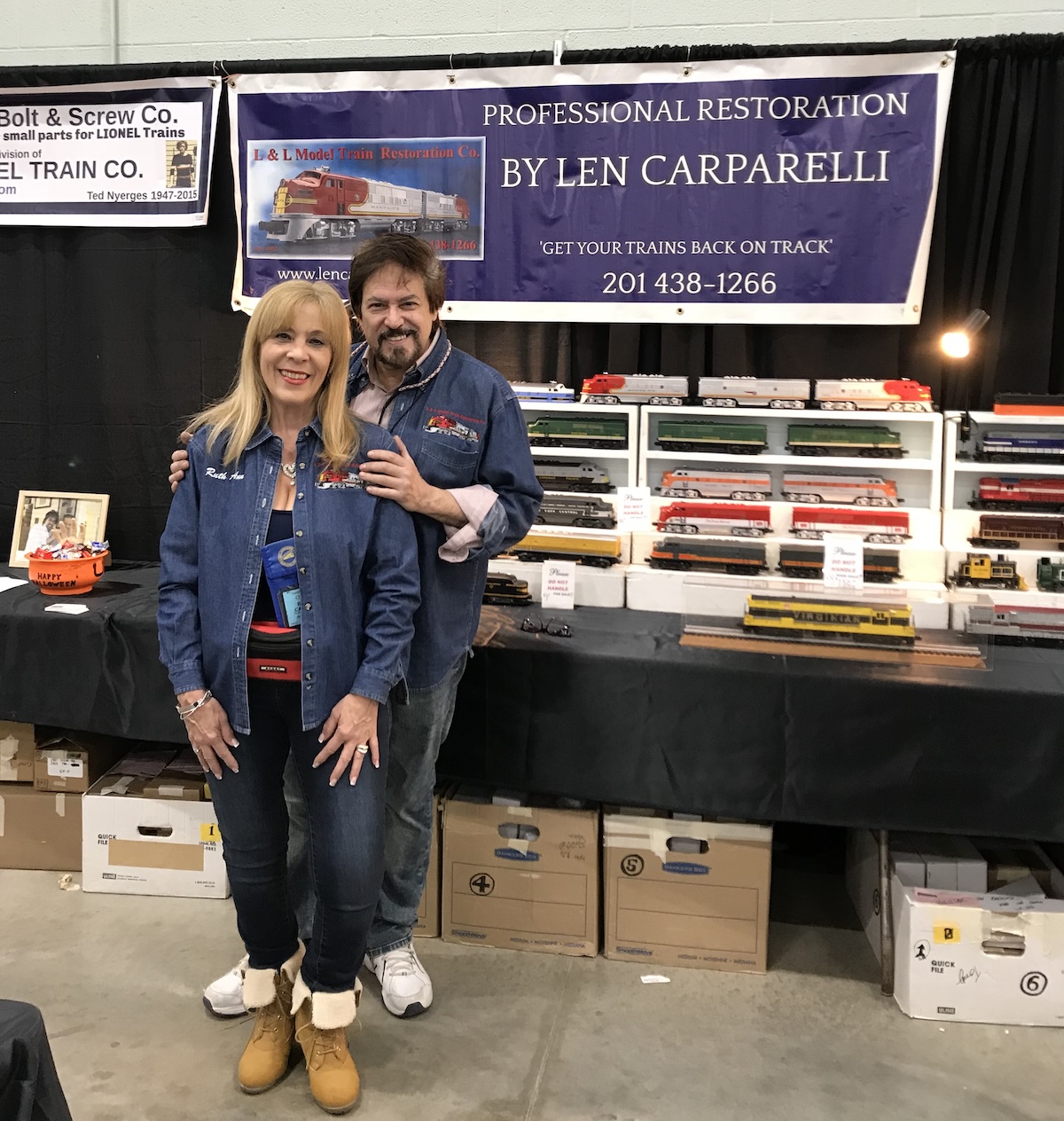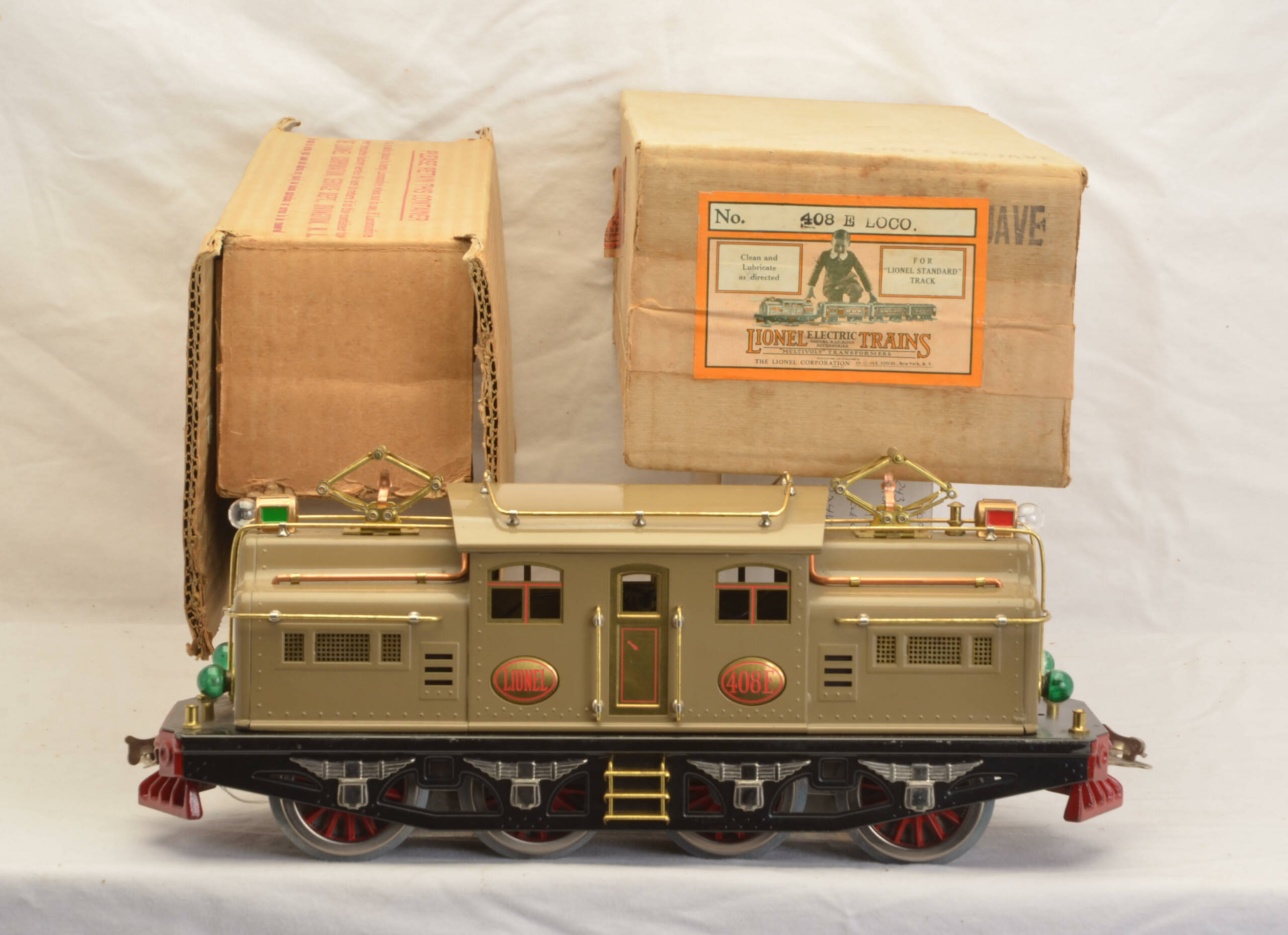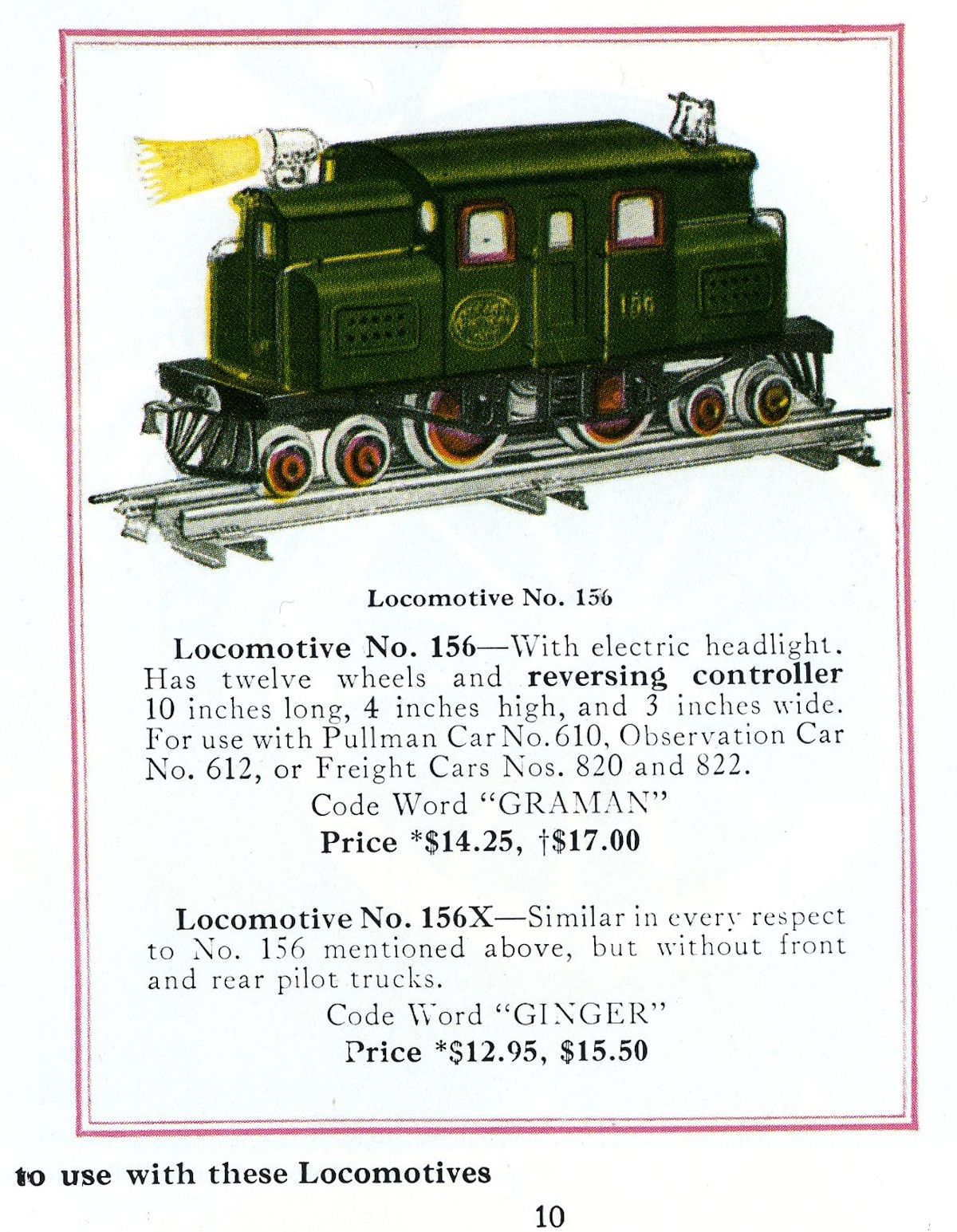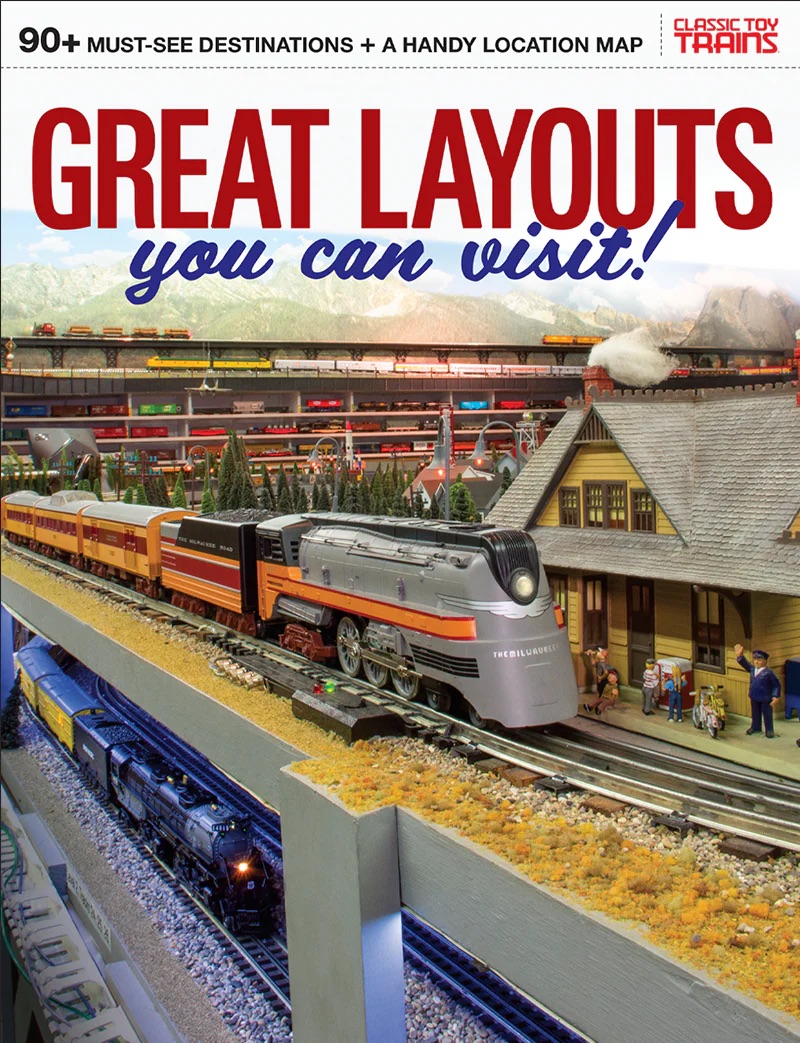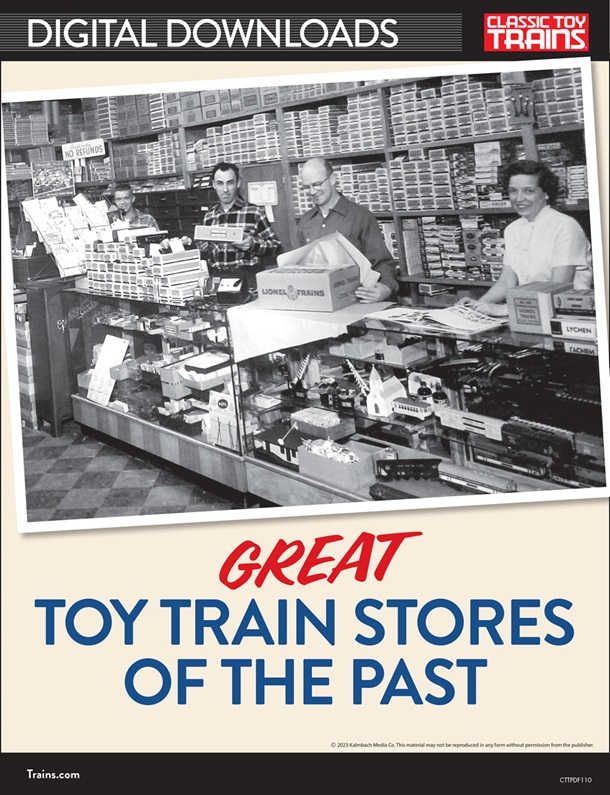I found this manuscript from the late John Grams in our manuscript files. There was no date on the envelope but it’s likely from the early 1990s. The article discusses 12 Lionel products that, while great inventions, were fraught with problems or didn’t work exactly as advertised. He included the following disclaimer:
Lionel trains were sold as toys. They were fun, fairly reliable and expensive playthings, manufactured with no thought beyond that purpose.They were not supposed to be precision scale models. That was an entirely different thing. While they were durably constructed, the trains were not intended to outlast the interest span of their young owners. No one considered them to be objects of popular art or future collectibles.
The toy business has always been a fickle one, trendy and highly competitive. J. L. Cowen not only had fine quality imports to worry about as he built his business, the domestic competition from Ives, American Flyer, and Marx must have contributed significantly to his stress. While Lionel was eventually able to absorb Ives and Flyer, Marx was still there gobbling up the low price, high volume end of the market.
The trains were not designed and produced by Santa’s helpers at the North Pole, but by flesh and blood human beings on an assembly line in New Jersey. Mistakes happened. Flaws and defects were sometimes overlooked.
I will be sharing these items over the next few weeks. I hope you enjoy them. –Rene Schweitzer, Editor of Classic Toy Trains
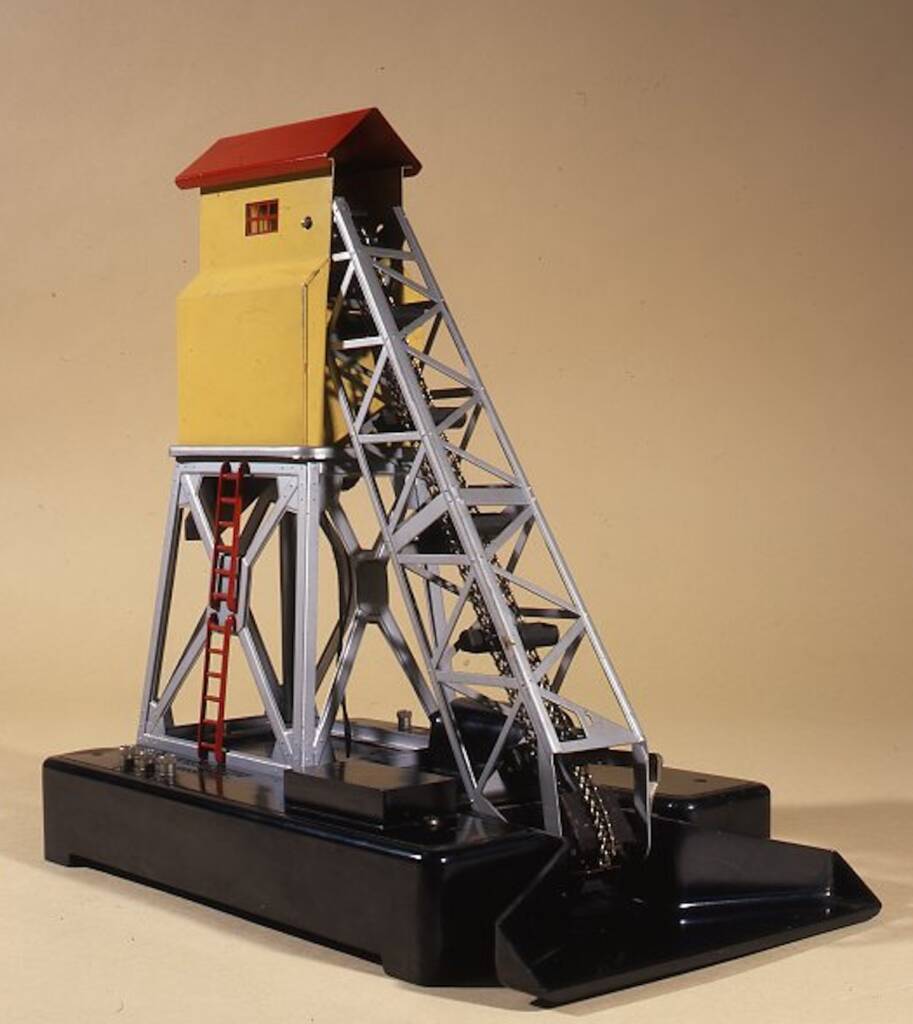
Over the years, Lionel made a variety of different coal loaders. Although none of them operated as efficiently as the log, barrel and other types of loaders the company marketed, they were fascinatingly busy accessories with great appeal. They all tended to be messy, often spilling as much artificial coal as they loaded.
The first of these, the No. 97 Coal Elevator, had prototypes almost everywhere in the country during its 10 year catalogued run.
It was an impressive, towering structure that looked great, but was functionally useless.
The coal was supposed to be elevated to a storagebunker in buckets on an endless chain, and then released down a chute to a waiting car, via a solenoid-operated trap door. But, the buckets had a small capacity, and as the chain drive carried them to the top of the accessory, much of the coal spilled out en route. Getting enough coal into the bunker to fill even a small car took hours, severely taxing the small drive motors and causing many to overheat.
But, this wasn’t really a widespread problem, because few of the young operators had the patience to wait that long. Most of them simply primed the apparatus by dumping coal directly into the bunker as the chain clattered on!






